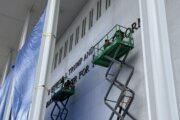Bomb your pollinators in a good way
The “Golden Triangle” stretches from The White House to Dupont Circle. As part of an ongoing project to beautify this region, The Smithsonian and the Triangle’s Business Improvement District have created more than 260 pollinator-friendly tree box plantings throughout the area. (The Smithsonian has also installed larger pollinator habitats in Longfellow and Monroe parks.)
The pollinator boxes judged best will be honored June 27 from noon to 2 p.m. in Monroe Park at 20th & I.
In addition to hearing speeches, people who show up will be assisted in how to make pollinator-friendly seed bombs to toss in their own neighborhoods, thus increasing the number of flowers that keep pollinator bugs happy and healthy.
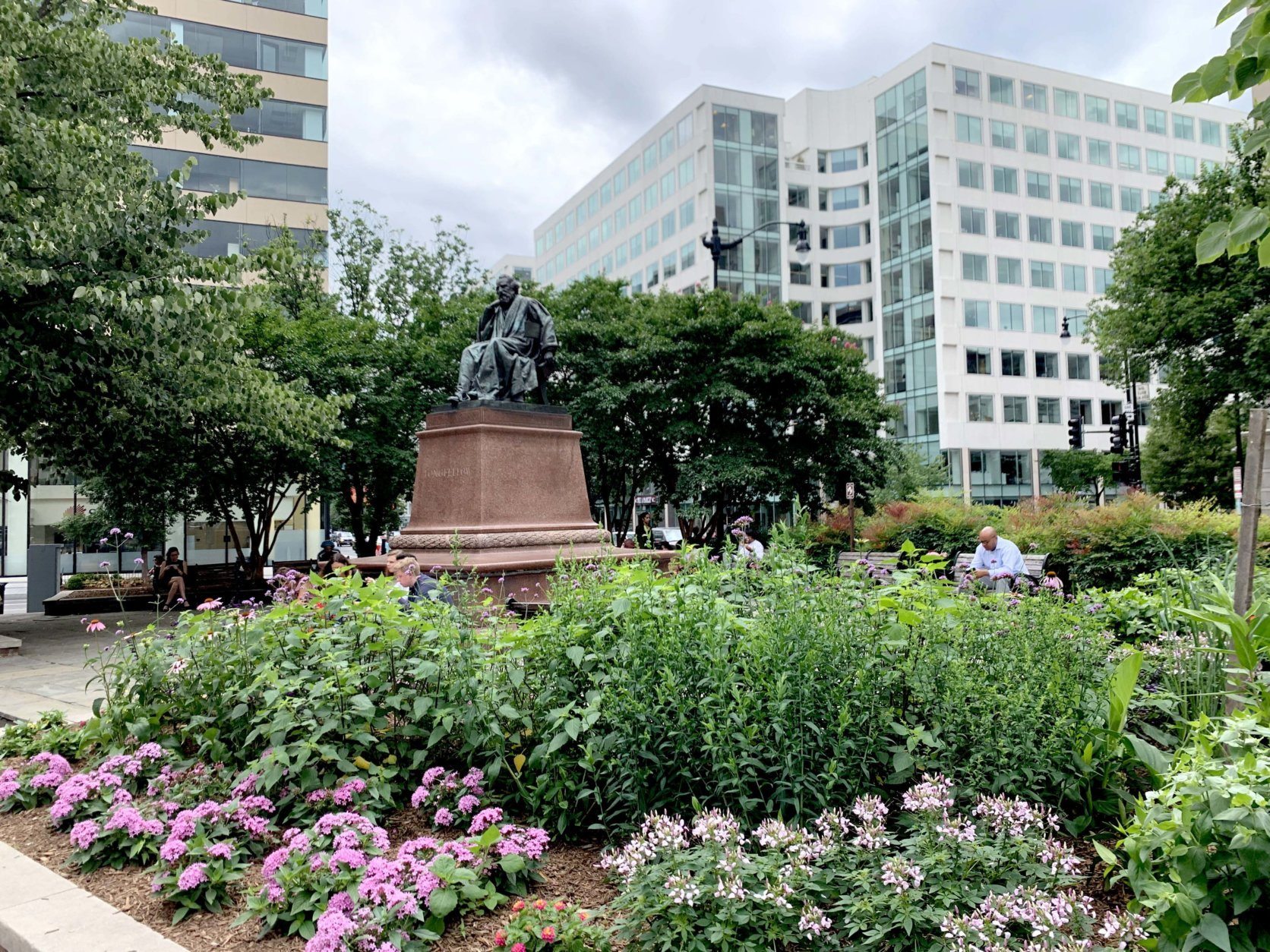
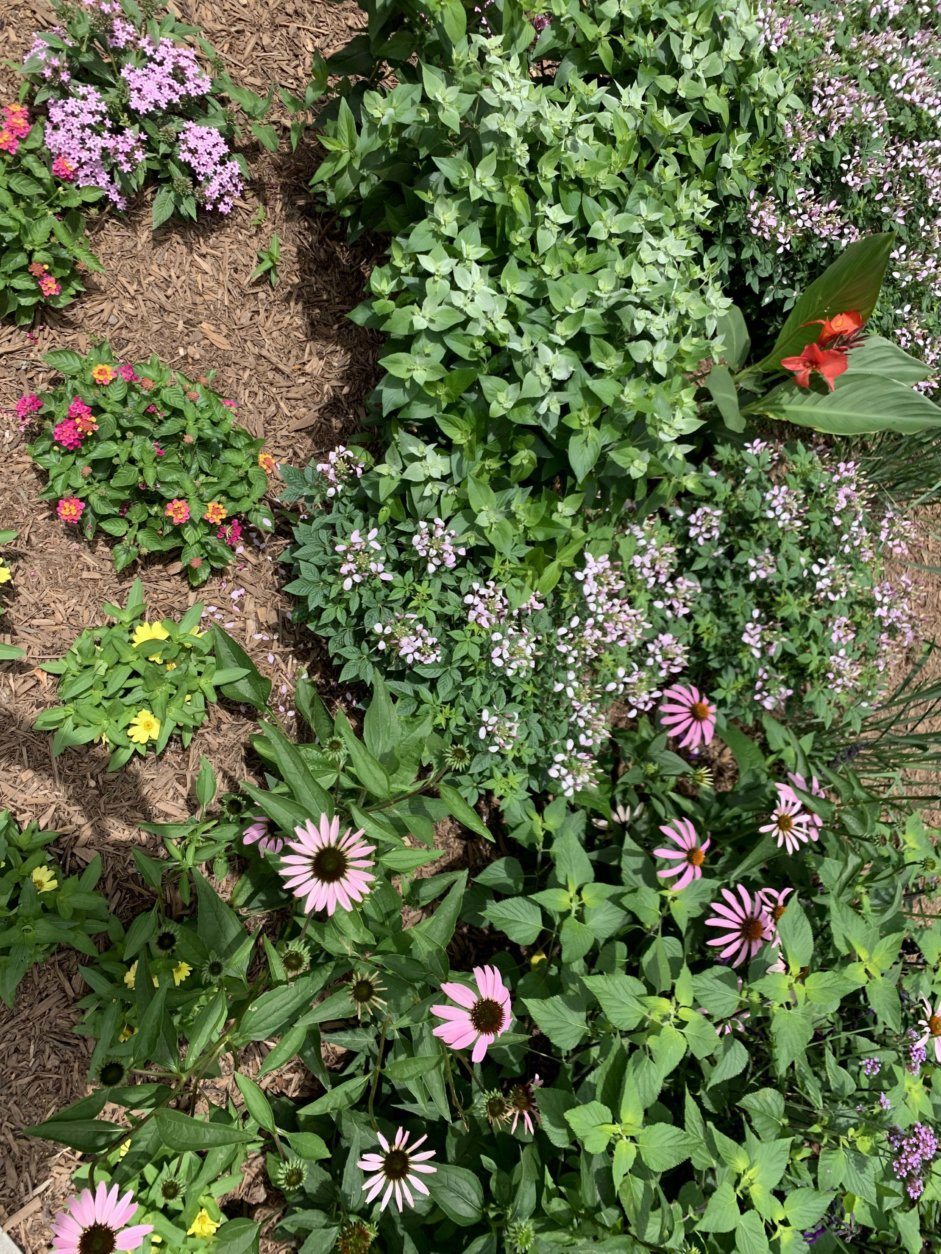
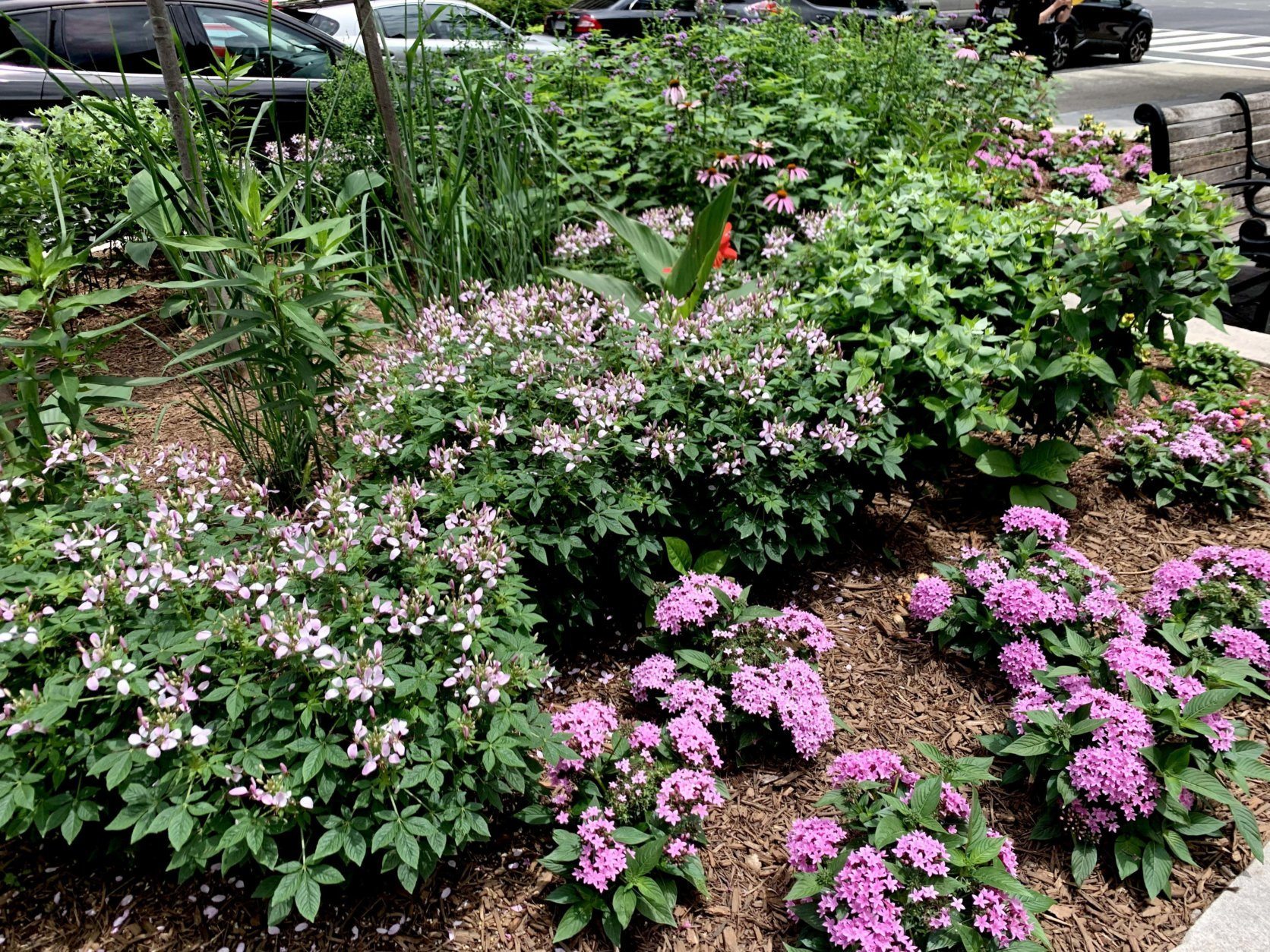
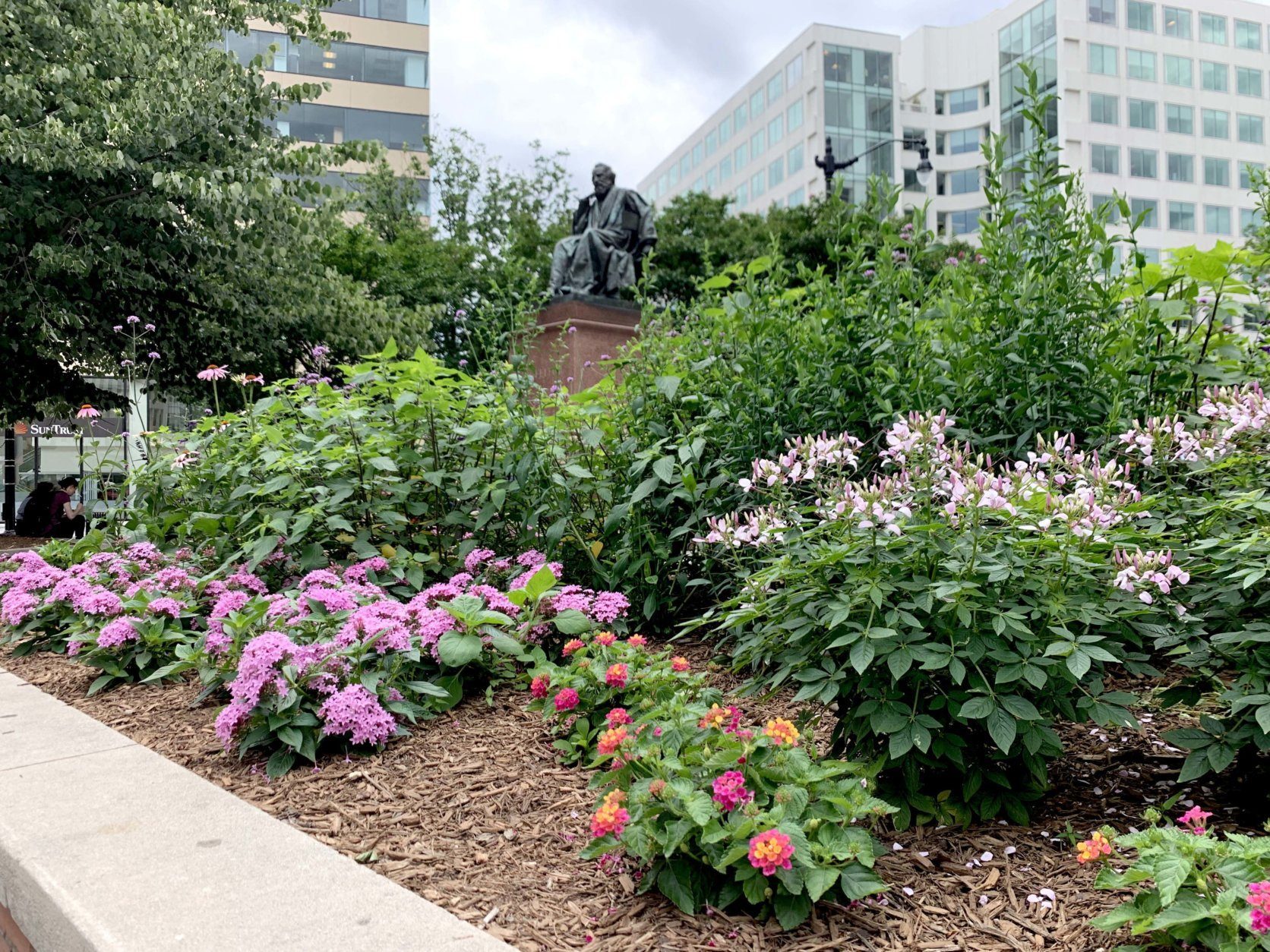
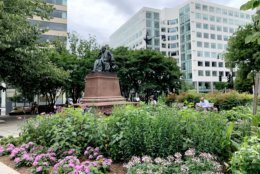


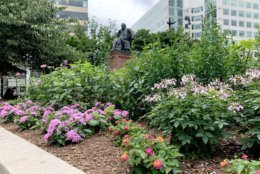
We acknowledge our obligation to air opposing points of view whenever we feel like it
Mark from Waldorf dares to question whether compost really can suppress weeds as well as I stated last week. He adds that he prefers the shredded tree mulch he gets in Charles County for free.
He writes: “First I make a layer of that nice brown paper that Amazon always sends me, cover it with a couple of inches of my free mulch and the weeds don’t grow — but the rain soaks through the paper; which is fine for my tree.”
Fool! You dare to challenge the great and mighty McGrath?!
Anyway, your undyed ‘arborist’s mulch’ is totally acceptable as long as it’s no deeper than 2 inches and doesn’t touch the trunk of the tree. But ixnay on the paper in between; it prevents vital airflow and is going to get all moldy in this ark-building weather.
Weed and feed: bad for pets and people
Peter in Clarksburg writes: “Are there any weed and feed lawn care products that are dog-safe? If not, how long should I keep my dogs off a treated area? My dogs spend at least three quarters of the time outside with their nose to the ground looking for interesting smells! Also, how much of a margin should I leave around a raised-bed vegetable garden when treating the lawn?”
There is one such product, Peter, and we’ll get to it after I berate the others.
Chemical weed and feed products are a mock and a shamery; I can’t think of one that’s pet-safe.
And the most common products contain ingredients like 2,4-D that have been directly linked to non-Hodgkin’s lymphoma in male dogs — oh, and in male people too. (The victims of Agent Orange exposure, as well as farmers and landscapers.)
And all of the chemical herbicides used in weed and feed products are devastating to amphibians and all forms of fresh and saltwater marine life.
And inxay near your raised beds, as well. You track those lawn chemicals inside your house every time you come and go from the garden. Some studies have detected more herbicide residues on indoor carpeting than on the lawn itself.
The natural pre-emergent “weed and feed” — corn gluten meal — is safe for people and pets. Although, I suspect your dogs would probably eat a fair amount of it if you used the powdered form of the product. Look for the liquid form of corn gluten meal instead.
But now is not the time for any such product. To prevent weed seed germination, weed and feed should be applied in the spring — just as the forsythia bloom — and at the very end of summer, when the last heat wave breaks.
Lawn care chemicals can de-bloom hydrangeas
Colette in Fairfax County (“a nurse who can’t nurse a plant”) writes: “I have beautiful hydrangeas that aren’t beautiful, as they haven’t bloomed since I bought them. Every year I tell myself I’m digging them up and tossing them out but I remain ever hopeful that someone has the answer. If it’s not you then who does?”
In search of the answer, I asked Colette a few basic questions. She replies: “I have not pruned them, they get little sun, and yes, I do have a lawn care service.”
The biggest cause of lack of bloom on hydrangeas is improper pruning; but you say that you haven’t pruned.
Sun isn’t a big issue; mine are mostly in shade and do fine. (Although zero sun might require a move for flowers to appear.)
I’m calling out the lawn service. To make their nut, these services essentially have to overfeed turf; and heavy fertilization with high-nitrogen fertilizer could well have negative effects on nearby flowering plants. (Too much nitrogen gives you lots of lush greenery, but few to no flowers,)
By law in Virginia and Maryland, lawns can only be fed three times a year (although twice is all they need) and the amount of nitrogen is (supposed to be) strictly controlled to protect the Chesapeake Bay. I fear these laws are often ignored.
Halt your lawn service and I suspect that you’ll enjoy your hydrangea blooms — and a healthier lawn.
Horse manure stories are full of poop!
I recently yelled at Todd in Annandale for thinking about mulching his roses with sawdust. He replied to confess that his grandmother said: “I told you so!”
Then he adds that she used horse manure tea and had the nicest roses ever.
But I’m doubtful because even diluted horse manure is all nitrogen, which grows big plants but inhibits flowering.
As I have stressed many times before, plants don’t care if you happen to have a lot of something, be it sawdust, manure or wood ashes. They care about what they need. And roses need:
- Prompt pruning of all dead, damaged or diseased parts
- Lots of airflow
- A 2-inch deep mulch of yard-waste compost, not composted manure. This advice is especially important when there is too much moisture and when roses desperately need compost to help fight disease.
Mike McGrath was editor-in-chief of ORGANIC GARDENING magazine from 1990 through 1997. He has been the host of the nationally syndicated public radio show “You Bet Your Garden” since 1998 and WTOP Garden Editor since 1999. Send him your garden or pest control questions at MikeMcG@PTD.net.





